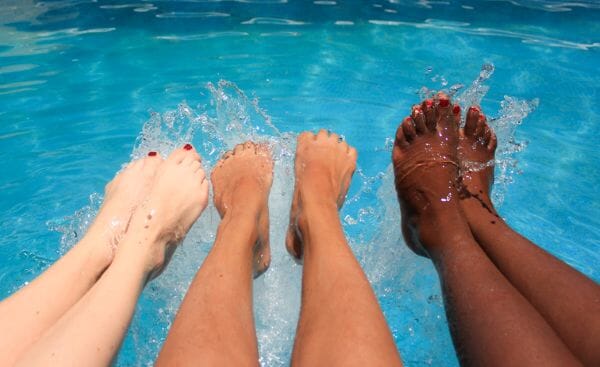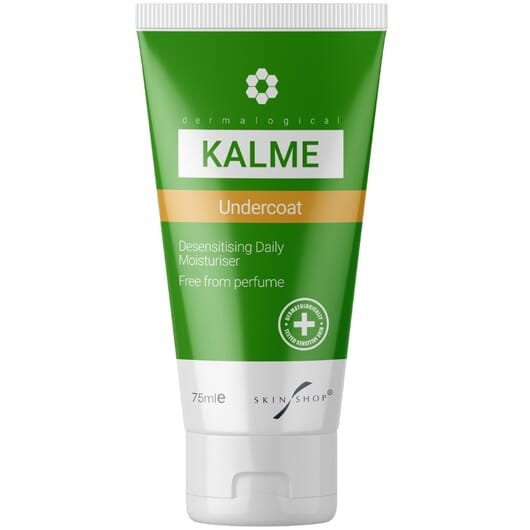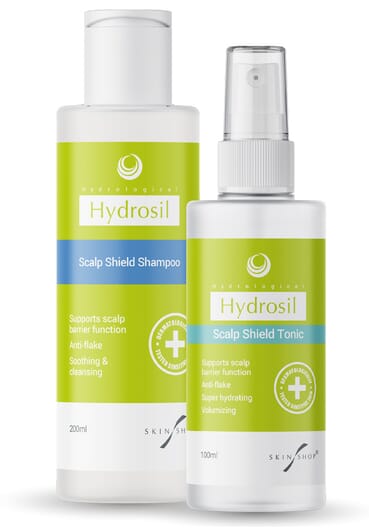The whole of Europe including the UK is experiencing some of the hottest heatwaves on record this summer and more are on the way.
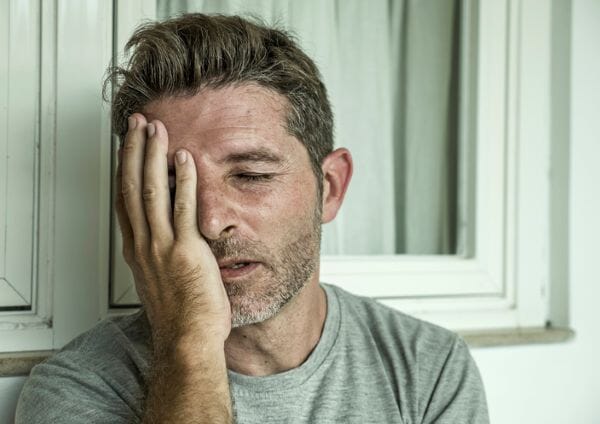
This means that many people may be experiencing heat-related skin issues that they have perhaps never had before because extreme heat can trigger some skin scares that can affect anyone, not just people with problem skin.
Dermatologist Dr Eva Melegh highlights five common skin scares that can be triggered by extreme heat and affect anyone and how best to deal with them.
1. Polymorphic Light Eruption (PLE)
PLE is effectively an allergic reaction to the sun and appears as a skin rash that is often mistaken for heat rash but it’s actually a skin allergy. It’s more common in younger people and affects women more than men, although early teen boys are also at higher risk, especially in the ears. People with fair complexions are also more at risk.

PLE rashes happen after being in the sun and while a PLE rash usually goes away on its own within 5-7 days, it can keep coming back for several weeks after it’s been triggered. If the blisters pop or the heads get scratched off it can also get infected quite easily from external bacteria getting into the open blisters.
The main symptom of PLE is a rash on the skin that appears after sun and extreme heat exposure, usually within a few hours or days and often becomes very itchy.
The rash usually comes in large red patches often with small skin blisters and it can feel like it’s burning. Strangely PLE rashes often do not appear on skin exposed to sun but on areas that are not exposed to the direct sun such as the chest, buttocks and under the arms, but which have been exposed to extreme heat. Another common place for PLE to appear is on the ears, often with small itchy blisters appearing.
How best to treat PLE
Antihistamines are quite effective for tacking repeated PLE rashes. Calamine lotion is also effective for reducing the itching of the blisters and cool baths or showers also help to ease the itching. Reducing the levels of bad skin bacteria on the surface of the infected skin can also help. Try Clarol Silver Serum which contains a patented silver ingredient that is repellent to bad skin bacteria while feeding good skin bacteria which can speed up wound healing. If the rash gets worse after a week it’s best to see a doctor.
2. Heat Rash
Heat rash is effectively a skin reaction to excessive sweat and is caused when sweat glands get clogged due to skin pore inflammation from heat. Small red bumps appear that feel prickly and hot. It often appears quite quickly in sun exposed skin and tends to be most common in areas that accumulate a lot of humidity and sweat such as under the arms, under breasts, on the neck under longer hair, behind knees and in elbow creases and in the crouch area (especially in babies wearing nappies).

Up to 30% of adults experience heat rash and it’s even more common in babies and young children because their sweat glands and ducts are still growing, and their bodies may not control their temperatures as well as adults do. Heat rash is more likely to happen if the hot weather is also quite humid.
How best to treat Heat Rash
Imediatey remove restrictive or sweaty clothing and cool skin down by getting into a cooler shaded area. If possible, immediately have a cool shower and don’t scrub the affected skin, just gently rinse it. Dry the affected area well before putting clothes back on and avoid applying any heavy moisturisers or sun creams until the rash has gone.
Once the rash has gone, gently exfoliate the affected areas to remove any lingering dead skin cells that may have got trapped in the inflamed skin pores. Try Clarol Silver & Birch Exfoliating Wash (www.clarol.co.uk) which contains extracts of birch bark to gently clean out clogged skin pores and a patented silver ingredient that reduces the growth of bad skin bacteria that could lead to infection and encourages the growth of good skin bacteria which may have got depleted when the skin’s surface was damaged by the rash.
3. Sun Cream Allergies
Sun cream allergies can happen through a combination of factors, namely the skin becoming more sensitive due to heat and inflammation, excess sweat mixing with the ingredients of the sun cream, other external chemicals in particular chlorine from pools mixing with the ingredients of the suncream and the ingredients in the sun cream itself becoming less stable and more reactive due to the extreme heat.
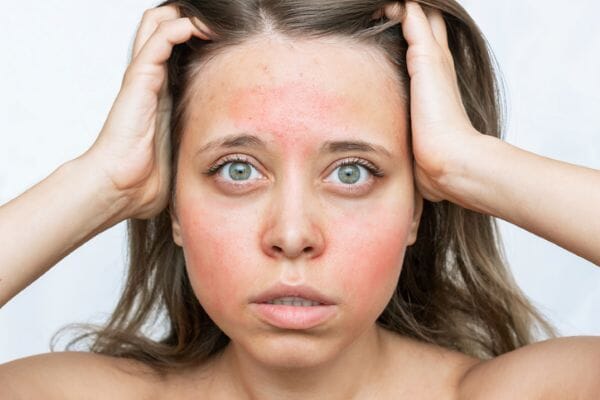
Sun creams allergies appear as a furious red rash at the site of the reaction to the sun cream, which can become very inflamed and uncomfortable. Around the eyes and on the face and neck are areas particular vulnerable to sun creams allergies. The skin at the site of the rection and near it can sometimes become very swollen.
How best to treat a Sun Cream Allergy
Sun creams with chemical filters as well as perfumes have a tendency to become more unstable in extreme heat. The best sun creams to reduce the risk of sun cream allergies are mineral sun creams, which provide a physical barrier to the suns rays as opposed to a chemical filter. This typically means they contain less chemicals and also the physical block from the sun’s rays means they become less unstable when exposed to extreme heat. Zinc Oxide is the most stable of all the mineral SPF’s, making it the least likely to cause a sun cream allergy, even in sensitive skin. Try Kalme Day Defence SPF40 which is very low in chemical ingredients and contains a pure zinc oxide SPF as well as natural anti-inflammatory ingredients to reduce inflammation and redness.
Using a barrier cream under sun creams can also minimise the risk of sun cream reactions. Try Kalme Undercoat which is a light cream designed to be worn under sun creams and cosmetics to reduce the risk of skin reactions thanks to a specific patented de-sensitising ingredient which dampens the skin’s reactive responses.
4. Sweat Chaffing
Sweat chaffing is caused when the skin becomes irritated and inflamed due to friction that typically occurs when skin rubs against skin and combines with sweat and heat. The skin becomes swollen from the heat (often meaning that skin which does not normally rub together starts to make contact) and then the friction disrupts the surface of the skin and sweat gets into the friction abrasions and causes a skin reaction, which leads to raw red skin and a painful burning sensation.
How best to treat Sweat Chaffing
Avoiding tight clothing and wearing sweat absorbing and anti-friction materials is the main prevention of sweat chaffing. Rinsing off abrasives like salt and sand after swimming can also help prevent sweat chaffing. Showering off sweat regularly also helps reduce the risk of sweat chaffing.
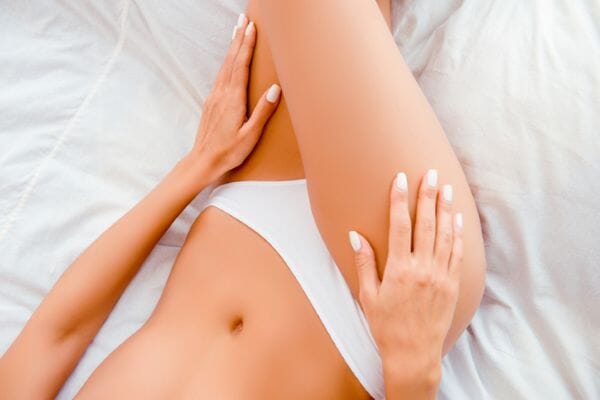
Using talc in areas prone to chaffing can also help keep skin drier. An anti-chaff balm applied to vulnerable areas can also help especially before embarking on any physical exercise or walking longer distances in the heat.
In the intimate areas such as between buttocks, in the labia region and in the groin folds it’s important to use skincare products (both to wash and to protect skin from chaffing) specifically designed for this area without any chemicals, perfumes, alcohol or petroleum. Try In2mate Moisturiser and In2mate Wash which are over 99.9% natural and contain prebiotics to help with intimate skin repair from minor abrasions and also ingredients to help reduce bacterial and fungal build up in chaffed intimate skin which can lead to infection and vaginal itching.
5. Sweaty Scalp Dermatitis
The scalp in an area that typically most people forget about in the heat yet its potentially one of the most vulnerable areas of skin in very hot weather. Not only is it likely to get sunburned, but the scalp is also the area of skin most likely to experience the greatest build-up of sweat due to hair and the fact that the body expels the most amount of heat through the head.
This means that contact scalp dermatitis from sweat is very common in extreme heat, even in people who don’t normally experience dermatitis.

Sweaty scalp dermatitis can appear like dandruff as the scalp becomes first irritated and itchy and then it gets dry due to a damaged scalp barrier function from sunburn and inflammation, plus chemicals from normal shampoos and irritants like chlorine from pools, causing it to flake. But scalp dermatitis is not the same as normal dandruff, which is caused by a fungal infection of the scalp. The main way to identify scalp dandruff is that is normally becomes extremely itchy and the flakes are usually small and white, and there’s a lot of them.
How best to treat sweaty scalp dandruff
The first thing to understand about scalp dermatitis is that anti-dandruff shampoos do not work for it, in fact they can make it worse.
Chemicals and perfumes in normal shampoos can also exacerbate it. It crucial to switch to a shampoo and scalp treatment that is specifically for treating scalp dermatitis. Try Hydrosil Scalp Shield Shampoo and Scalp Shield Tonic which both contain a natural plant steroid to calm down the inflammation and itching, a prebiotic to repair scalp barrier function and are perfume and chemical free. The scalp tonic is particular effective as it’s a leave-in formular which means its stays active on the scalp for several hours helping to calm down itching and inflammation and repair scalp micro damage.



